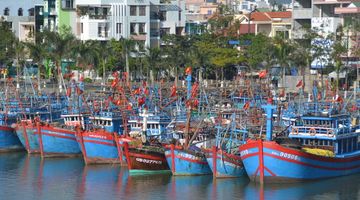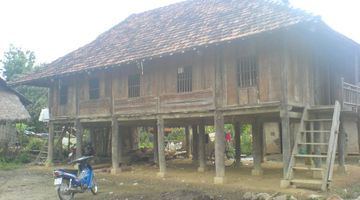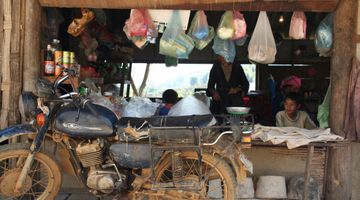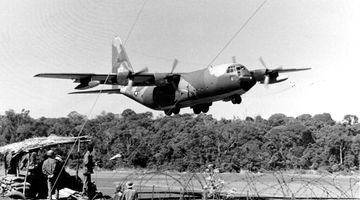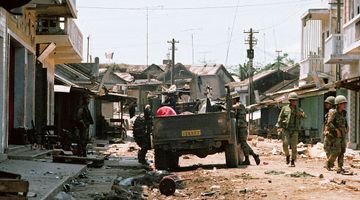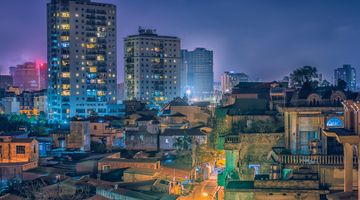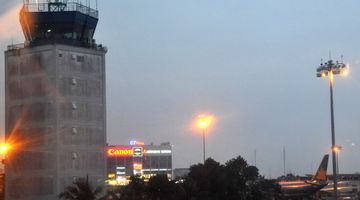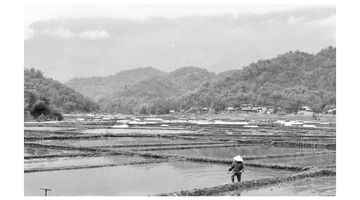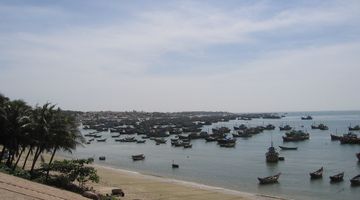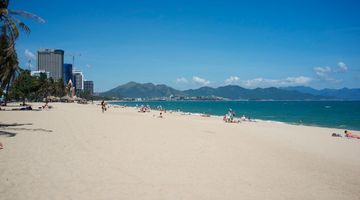Vinh
In a nutshell
Close to the hometown of Vietnam’s Ho Chi Minh himself, Vinh is a port city that doesn’t tend to see much action. Located in the northern half of the country’s coastline, Vinh is less a tourist attraction, and more a stopping point for onward travel.
Why go to Vinh
With such a strategic location for shipping supplies during the American-Vietnam War, Vinh found itself wiped clean from repeated bombing, but has since rebuilt and continues to operate to this day. Few signs of it’s broken past remain, although for those interested enough, it’s possible to spot the occasional abandoned bunker.
Few tourists come to Vinh for the sake of seeing the sights. More often than not, travellers pass through Vinh on their way to Laos or another Vietnamese city, including Hanoi or HCMC. However, if you do find yourself on a short stopover, there are still a few points of interest for the curious visitor.
Situated no more than fifteen kilometres away from Ho Chi Minh’s birthplace, this city is most known for offering a glimpse into the past. History buffs might enjoy wandering through a few museums, or even taking a look at Ho Chi Minh’s shrine, which is located about twenty minutes outside of town.
If you’re not up for a history lesson while passing through, you can also travel a mere twenty kilometres outside of town to Cua Lo Beach, which does see its fair share of tourists.
When to go to Vinh
May through July are the driest months in Vinh, but also the hottest. If you’re just passing through and can’t avoid the peak of summer, plan to make a stop at the beach to cool off.
Outside of those months, Vinh sees tropical monsoon-like climate, so a decent amount of rain should be expected. During the winter, it can get cool in the evenings, and a warm jacket will be appreciated.
If you’re turning a few days in this city into a short beach trip, the warm summer months might be just right. Otherwise, come when it’s cooler and bring an umbrella.
Where to saty in Vinh
Most visitors to Vinh end up staying in the same section of town. On the west side, where the public transportation hubs are located, you’ll notice one street where most hotels and guesthouses congregate. The street changed names several times, from Quang Trang, to Le Loi, to Mai Hac De, so if you find yourself confused, keep following your map until you see the right name.
Unfortunately, since Vinh doesn’t see too much interest, the accommodation options are somewhat lacking. Rooms can certainly be found on the cheap, but don’t expect high quality amenities. Also keep in mind the backpacker trail doesn’t quite run through this part of town, so community-driven hostels aren’t widespread like they are in other cities.
Where to eat in Vinh
Vinh isn’t known for its fine dining, but there are some unique dishes on offer throughout the city. Things like chao luon - a spicy eel soup, or banh muot - steamed rice rolls, are worth trying if you want a taste of the local culture.
For a truly interesting dinner, head to Restaurant Kim Anh 2, where diners can choose the (live) fish they want out of tanks and then chow down after their pick has been caught and cooked. We’re not sure if we’ve ever had fish that fresh, although having come out of a tank, it doesn’t have quite the same effect. If you’re feeling adventurous, try the turtle.
Getting around in Vinh
For travel within the city, grab a mototaxi to zip you around. This is generally the cheapest and quickest way to get from point A to point B.
However, if you’re not averse to getting around like the locals do, the bus system is adequate and can take you in and around Vinh fairly easily. Ask your hotel or guesthouse management for directions on which bus to take, as it can be a bit confusing if you’re not used to it.
Alternatively, if you’ve come for the beach or to make a border crossing into Laos, using a tour company is convenient and hassle free.
Getting in and out
For most travellers, getting in and out of Vinh is their main priority, as it’s frequently used as a stopping point on the way to Laos, often for travellers making their way overland from Hanoi to Vientiane. While the trip from Vinh to Vientiane is quite long, generally lasting around sixteen hours. Make sure you’ve secured the proper visa before your trip date, as you’ll need to present it at the border.
Alternatively, if you don’t want to make the trip straight through, you can also travel via bus from Vinh to Phonsavan, which takes around twelve hours. Hoang Long bus company operates this route and only costs around USD12. Travellers often make their way to Vientiane from there, or head out to Luang Prabang.
A popular route within Vietnam is between Vinh and Hanoi, which multiple bus companies operate on includign Hoang Long company. Plan to spend about USD10-12 for the six-hour ride. Buses depart frequently throughout the day.
Air travellers will be happy to know Vinh has an international airport operating routes in and around Vietnam. Vietnam Airlines, Jetstar, and VietJet Air all operate routes between Hanoi, Vinh, and Ho Chi Minh, so onward travel isn’t difficult to find. From Vinh to HCMC, tickets can be found for as cheap as USD100 for the two-hour trip. To Hanoi, plan to spend nearly double; consider taking the bus instead.
Another option for travellers to and from this port city is by rail. To Hanoi, the trip on Reunification Express lasts around six hours and costs USD15-25. If you don’t mind spending a few extra dollars, purchase a soft seat - your legs will thank you afterwards. Another destination from Vinh is to Hue, which takes slightly longer - about eight hours - and costs USD23-35, depending on the ticket class you choose.
Safety in Vinh
As it’s not a hotbed for tourist activity, you won’t see as much petty crime or theft in Vinh. It’s generally a safe city, but do be careful and have your wits about you. Be aware of scams if using tour companies or purchasing bus tickets – especially if you’re choosing to travel into Laos. Research tour companies thoroughly beforehand, and make sure they’re reputable for making long, overland trips.



